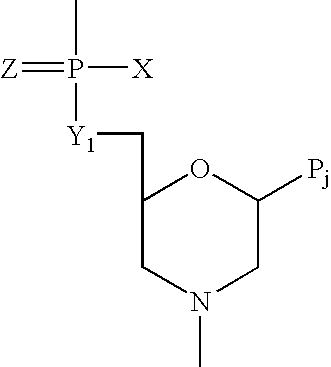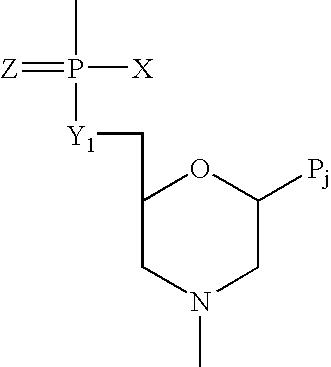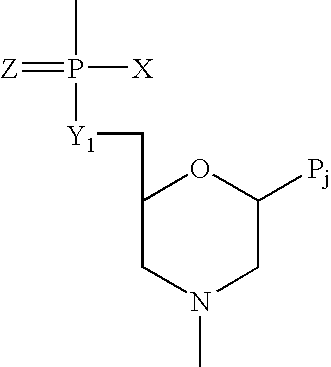Antisense oligomers and methods for inducing immune tolerance and immunosuppression
an antibody and immunosuppression technology, applied in the field of antibodies and immunosuppression, can solve the problems of immunosuppressive agents with severe side effects, high risk and drawbacks of allogeneic transplantation, and high debilitating or lethal side effects, so as to reduce the capacity for antigen-specific activation of t cells, enhance the expression of extracellular il-10, and increase the production of extracellular il-10
- Summary
- Abstract
- Description
- Claims
- Application Information
AI Technical Summary
Benefits of technology
Problems solved by technology
Method used
Image
Examples
example 1
Arginine-Rich Peptides Enhance Uptake of Oligomers into Mature Dendritic Cells
[0182] Delivery of antisense molecules without substantial manipulation of the cellular membrane has been an impediment to targeting gene expression in DCs and other immune cell types. These procedures often result in extensive damage to the membrane allowing for only short lived experiments to be conducted. Numerous arginine-rich peptides were examined as to their ability to deliver oligomers to various cell types with no manipulation beyond direct addition to cells cultured under normal conditions. The PMO chemical structure and peptides used in this study are shown in FIG. 4. PMO synthesis and conjugation of peptides and or fluorescein were carried out at AVI BioPharma as previously described (Summerton and Weller 1997; Moulton, Hase et al. 2003; Moulton, Nelson et al. 2004). The arginine-rich peptides shown in FIG. 4 are among several that have been shown to enhance cellular uptake. Fluorescein can be...
example 2
Antisense Inhibition of CD86 Expression Also Alters CD80 Expression
[0185] To determine if the enhanced uptake of the PMO into DCs provided by the peptide conjugates would translate into functional antisense activity we chose to synthesize oligomers targeting the translational start site of CD86 (B7-2 AUG1, SEQ ID NO:15) and a sequence scrambled control oligomer (5′-CGTGGTGCACTGCGTGTGGC-3′). A considerable reduction in the level of CD86 (B7-2) was observed in cultured DCs after treatment with the sequence-specific oligomer and LPS compared to controls (FIG. 6, top histogram). However, when a measure of the level of CD80 (B7-1) was made under the same conditions it was observed that a significant reduction was produced in the cultures treated with antisense to CD86 compared to controls (FIG. 6, bottom histogram). This was unexpected since the CD86 sequence shares little homology with that of CD80 and considerably low levels of homology around the translational start site. Nearly iden...
example 3
Increased DC IL-10 Production is Linked to Diminished CD86 Expression and Not Ligand Interaction
[0187] In light of the results seen in Example 2 we examined the cytokine production profile of the CD86 antisense treated DCs. IL-4 and IL-12 production was not significantly altered in the DCs receiving the B7-2 AUG1 CD86 antisense oligomer (SEQ ID NO:15) compared to controls (data not shown). However, IL-10 production was evident when DCs were treated with a maturation stimulus such as LPS in conjunction with the CD86 antisense oligomer-P002 conjugate (SEQ ID NO:15) and not the P002 peptide alone or a scrambled control sequence conjugated to P002 as shown in Table 3 below. The same result was seen when other delivery peptides were used with SEQ ID NO:15 or alternate sequences targeting the translational start site (SEQ ID NO:16). Furthermore, IL-10 staining was detectable when the DCs were not permeabilized indicating that IL-10 was being secreted from the cells where it could exert a...
PUM
 Login to View More
Login to View More Abstract
Description
Claims
Application Information
 Login to View More
Login to View More - R&D
- Intellectual Property
- Life Sciences
- Materials
- Tech Scout
- Unparalleled Data Quality
- Higher Quality Content
- 60% Fewer Hallucinations
Browse by: Latest US Patents, China's latest patents, Technical Efficacy Thesaurus, Application Domain, Technology Topic, Popular Technical Reports.
© 2025 PatSnap. All rights reserved.Legal|Privacy policy|Modern Slavery Act Transparency Statement|Sitemap|About US| Contact US: help@patsnap.com



